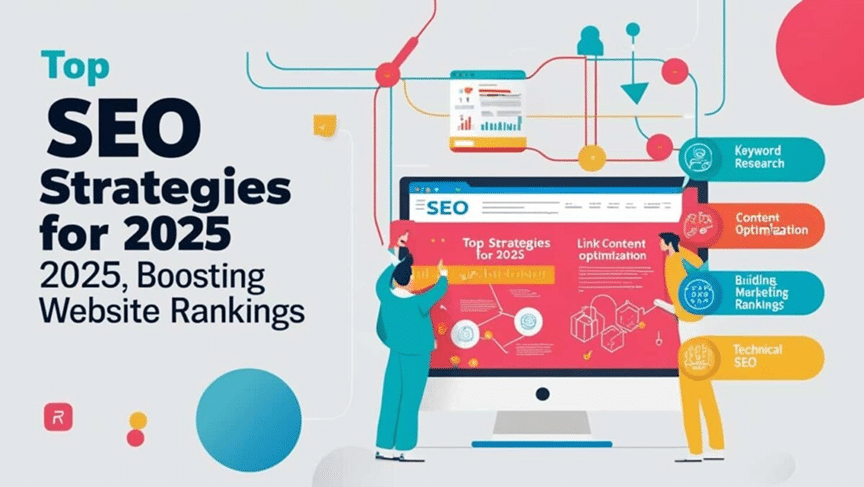In 2025, a professionally designed website will be essential to your brand. Over 4.5 billion people are online, and 90% are mobile, so reaching consumers requires a strong online presence (blog.hubspot.com). A well-designed website gives your brand a strong first impression and keeps it competitive in a digital market. Crosstheteas.org reports that companies with professional websites are “3x more likely to be perceived as trustworthy” than those using social media alone. Simply put, funding website development shows your company is modern, customer-focused, and serious.
Table of Contents
To show, let’s start with a basic comparison table of a “low-quality” site against a professionally produced one:
Feature | Low-Quality Website | Professional Website |
Designing and Branding | Simple, inconsistent branding seems amateurish. | Modern, on-brand design inspires confidence. |
Individual Experience | confusing navigation; broken links | Simple menus; unambiguous call-to-action instructions |
Page Load Speed | Five plus seconds is slow. | quick (one to two seconds) |
Mobile Optimization | The performance is inadequate on tablets and phones. | Mobile-first UX; responsive design |
SEO and visibility. | Not refined; buried in search | Better methods in SEO; better ranks |
Security and trust. | Not SSL; no references; generic material | Safe (HTTPS); client evaluations; original material |
Tools and analytics | No tracking; no integrations | Here, we combine Google Analytics, CRM, and marketing connectivity. |
Scalability | Difficult to change; few features | modular code; simple page/feature addition |
This chart shows how a professional website distinguishes itself in all respects: design quality, speed, visibility, and adaptability, all of which support a better brand.
Professional Branding & First Impressions
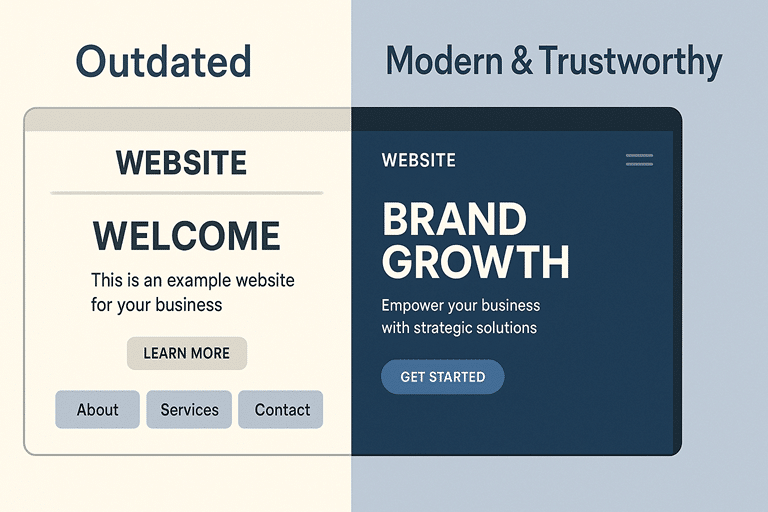
Your brand’s digital “shopfront,” a custom-built website, instantly shapes visitors’ impressions upon landing on your homepage. According to research, 75% of consumers decide on a company’s legitimacy based on the design of its website; they do this in only 3–5 seconds across the site. Actually, one research study revealed that design-related Sweor.com accounts for 94% of initial impressions of a website. Before they ever read a word, a badly designed, antiquated website will turn off potential consumers. On the other hand, a neat, professional website tells others your brand is reliable and competent.
Design Web Masters and other website development companies make sure that every page of your business consistently uses its logo, colour scheme, and message. This coherent design and overall feel create a unique brand identity. Businesses with professional websites, for instance, are three times more likely than those with only a social media presence (crosstheas.org) to be considered trustworthy. Practically speaking, this implies a well-made site may immediately inspire trust in a buyer. If your website seems professional, a smart visitor will treat your company seriously. “Having a website boosts your credibility…and it’s an excellent place to highlight positive reviews,” blog HubSpot.com suggests. With professional web creation, you own the initial impression rather than depending on luck or a generic template.
Improved User Experience & Navigation

Visitors will only buy your goods or services if they can find what they need quickly. Excellent website construction gives the user experience (UX) first priority: logical menus, fast-loading pages, and obvious paths to important information. Companies pay the cost when UX is bad: 79% of people who search for what they want leave a website and visit another, kanopi.com. Furthermore, if a website is not well-organized, notifyvisitors.com, approximately 40% of users will leave it.
Professional website development focuses on making a site user-friendly. Following best practices and doing usability testing helps developers make sure guests easily find what they need. For bigger sites, this might include a search engine, clickable buttons that stand out and a simplified navigation bar. Businesses that significantly enhanced UX witnessed up to a 400% boost conversion rate (kanopi.com). By comparison, after only one negative, kanopi.com, crowded layouts or faulty connections drove away 52% of consumers. Fundamentally, investing in website development means giving the user a seamless, fulfilling trip that keeps bounce rates low and conversions high.
Clear calls-to-action (CTAs) and intuitive design count. Whether that’s registering for a newsletter, completing a purchase, or getting in touch with the firm, every page on a well-developed site leads the visitor to the next action. Often including analytics and A/B testing, development teams help to improve this process over time. One UX research claim is that excellent UX can multiply conversion by 200% and that good UI design by itself may increase visitor notifications. Emphasizing navigation and clarity helps an excellent website transform casual surfers into consumers.
SEO Optimization and Search Visibility
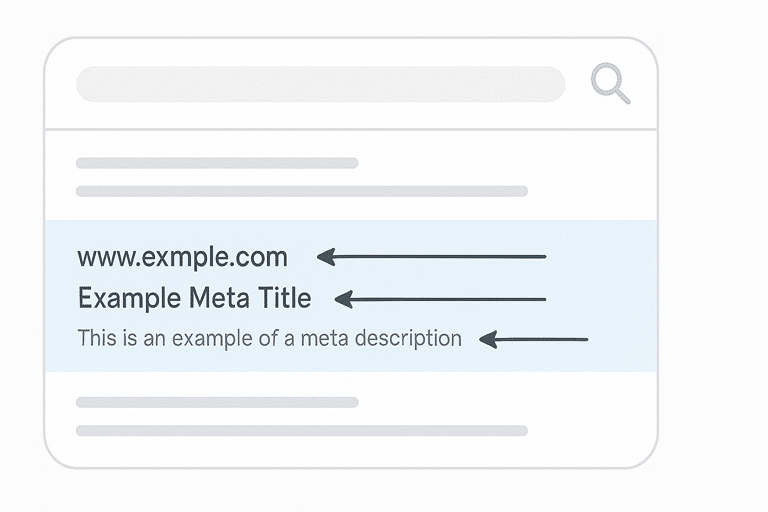
Developing a website involves both discovery and appearance. A major component of website construction is search engine optimization (SEO), which guarantees your material reaches the correct audience. Built with SEO in mind, “organic search is arguably the most valuable marketing channel (searchenginejournal.com) may draw a torrent of free visitors. Actually, organic search engine behavior accounts for more than half of all page visits. Even the finest material may stay unnoticed on page 2 of Google without effective SEO.
Professional web designers build your site so that search engines may efficiently index and crawl it. This covers schema markup, quick load times—a recognized ranking factor, clean code, and mobile-friendly layouts—Google’s mobile-first index is now common. To make every page unique in search results, we also provide striking meta titles and descriptions—just like the one above. The payback is substantial: sites with SEO have been found to get ten times more natural traffic than those depending only on ad crosstheteas.org.
Moreover, small company website creation strongly relates to local SEO. For instance, 97% of customers use search engines to locate local businesses. According to blog.hubspot.com, 90% of last year’s internet users searched for a local business. searchenginejournal.com. Including local search phrases and geographical pages in your website can help your website to become a 24/7 lead producer. Without a website, your company is “virtually invisible” to a large web audience (blog.hubspot.com). Basically, from site maps to mobile tags, every component of website development helps raise your presence where it matters.
Faster Loading Speed = Lower Bounce Rate
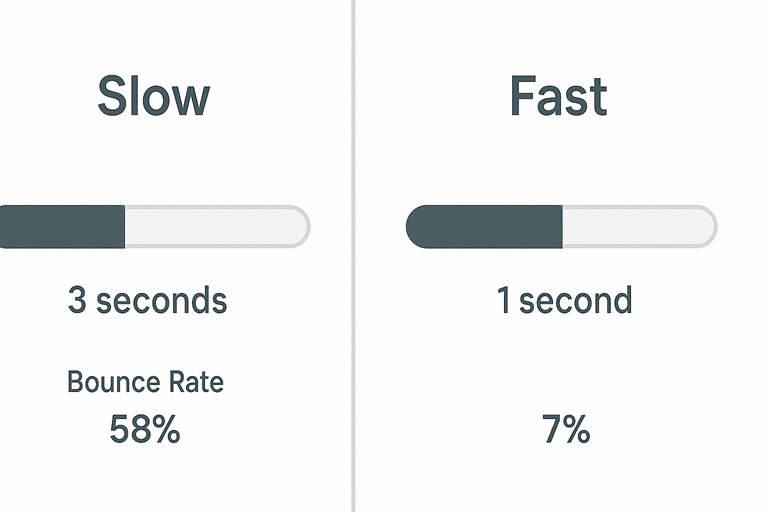
Among the most important technical aspects in web development is speed. Particularly mobile users, visitors have little tolerance; 40% of them quit a website if it loads kanopi.com in more than three seconds, and every extra second of delay lowers satisfaction. Slow sites also have fewer pages per visit and poorer search results (Google ranks using Core Web Vitals).
Expert builders optimise every component of a website’s speed. This covers picture compression, low CSS/JavaScript file count, effective hosting, and cache implementation. Deloitte discovered that only a 0.1-second load time optimization may double revenue, page visits, and conversion rates, visitor-wise. On the other hand, Google research indicates that a delay of one to ten seconds increases mobile bounce rates by 123%, according to notifyvisitors.com. The result implies that before users even see the homepage, a slow-speed site might be losing well over half its traffic.
Practically speaking, if your web page currently loads in six seconds, reducing it to two seconds will significantly decrease desertion. DWM and other top companies stress lean, clean code for this reason—to maintain load speeds for desktop and mobile under two seconds. Besides keeping users on your sites longer, a speedy website communicates professionalism and quality. Sites tuned for speed typically show double or more the engagement of unoptimized sites in testing.
Mobile Optimization in a Mobile-First World
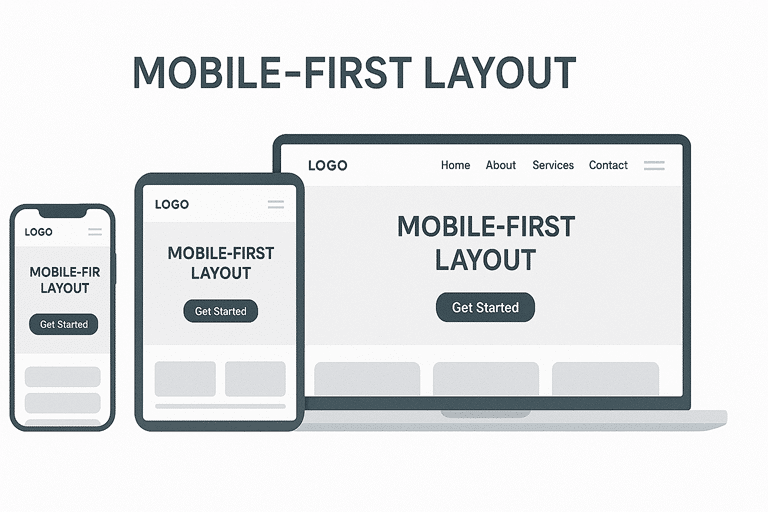
“Mobile-first” is not a cliché; it will be a need in 2025. According to hostinger.com, 77% of all internet searches take place on mobile devices, and smartphone traffic drives the majority of site visits. Google has entirely switched to mobile-first indexing; hence, it ranks and indexes mostly using the mobile version of material. Should your website not be completely responsive, you run the danger of annoying visitors and lagging in search results.
Statistics highlight this change: more than 84% of internet users hope webpages show on mobile hostinger.com. In fact, 60% of consumers would not trust a business that has not optimized its website for mobile devices. And 57% of users are less inclined to suggest the company, kanopi.com, when their mobile experience is poor. Conversely, sites optimized for smartphones see far more interaction. Mobile-friendly websites have 40% greater conversion rates than non-optimized ones, per one survey.
Professional website building usually incorporates mobile adaptability. Content therefore automatically reflows to accommodate tablets and smartphones, with legible text and simple-to-tap buttons. We test elements like menus and picture sizes on real devices. By reducing pop-ups—which annoy 70% of mobile visitors to hostinger.com —and allowing quick touch interactions, developers also simplify the experience for mobile. Treating mobile as the first priority helps businesses make sure the 63% of traffic coming from phones that notifyvisitors.com gets a first-rate experience. Happy mobile customers are thus 75% more likely to return to a well-designed mobile site. hostinger.com and 78% of local mobile searches result inn offline purchases (hostinger.com). Simply stated, a non-negotiable advantage of contemporary website design is mobile optimization.
Customizable Elements for Enhanced Conversion Rates
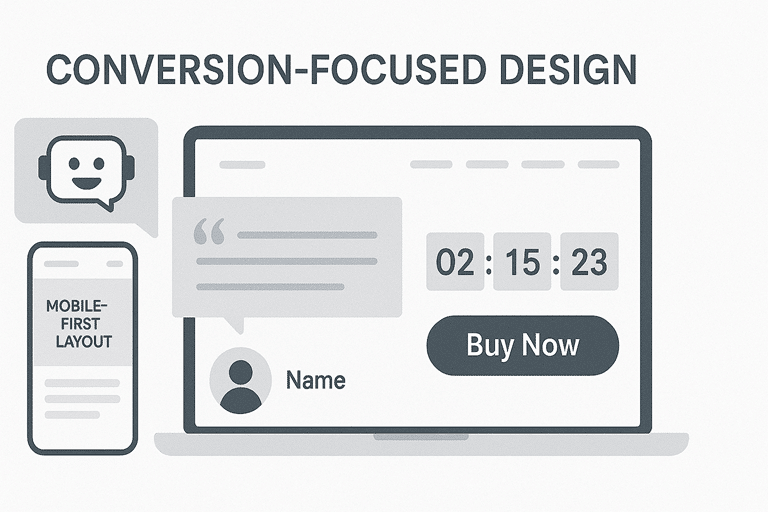
Building your own site is one of the main benefits in that it allows you to include bespoke features and capabilities meant to increase conversions. Unlike a one-size-fits-all template, a designed site could have resources targeted to your clients. These may include interactive product configurators, sophisticated search and filtering, live chat help, booking systems, or tailored content.
The impact on sales can be remarkable. For example, a strong overall UX may treble conversion rates at notifyvisitors.com; excellent interface design alone can double them. Think about dynamic elements like chatbots: businesses utilizing artificial intelligence chatbots to qualify leads have achieved up to three times greater sales conversions than those using static web forms (dashly.io). In a bespoke site, similarly, including case studies, user feedback, or training videos—all simple to manage—can greatly increase buyer trust.
Personalism is another strong illustration. Higher average order figures indicate a site that welcomes returning customers by name or suggests items based on browsing behaviour. Little unique touches like an interactive quiz or a countdown timer for a flash sale may captivate guests and inspire purchases. A/B testing tools are also included by development teams so you may test many CTAs or layouts and track which one works better. The bottom line is that you produce a convincing, conversion-orientated experience by including the appropriate unique features via website development. Companies across sectors that created unique, conversion-optimised websites have seen significant increases in revenue; typically, the leads double or more than on their previous websites.
Integration with Marketing & Analytics Tools
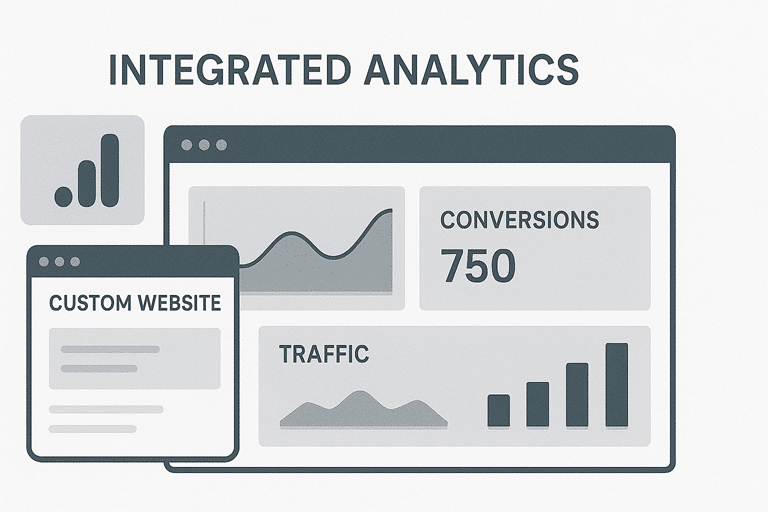
Data-driven modern marketing is what drives a bespoke website to be considerably more effective when combined with your marketing stack. Your website may be able to track user activity and send that data to analytics systems on its own. For example, you typically integrate Google Analytics to track every visit, click, and scroll. More sophisticated programming links your site via APIs to CRM systems, email marketing tools, or advertising networks. This degree of integration transforms a website into the centre of all consumer interactions.
Why would such connectivity be important? When all channels are linked, you can accurately calculate ROI and customize follow-up actions. For example, e-commerce sites provide automatic reminders for cart abandonment by connecting with email marketing. Service companies instantly upload fresh leads to their sales pipe and connect their website to booking calendars. Measuring the impact on revenue, 80% of organizations employing marketing automation—which depends on website integration—saw better lead generation, and 77% saw higher conversions (moosend.com). Companies have discovered that smart use of integrated solutions, such as automatic welcome emails or retargeting advertisements set off by site visits, may double or treble their marketing return on investment.
Development teams guarantee from an analytics perspective that every page and button is trackable. You can easily see which blog article generates the most sign-ups or which product page converts the most. This realisation lets one keep improving. Ultimately, a website that seamlessly integrates with analytics and marketing tools enables small companies to outperform their competitors by facilitating focused, effective marketing strategies that attract and retain clients with minimal uncertainty.
Competitive Advantage in Crowded Markets
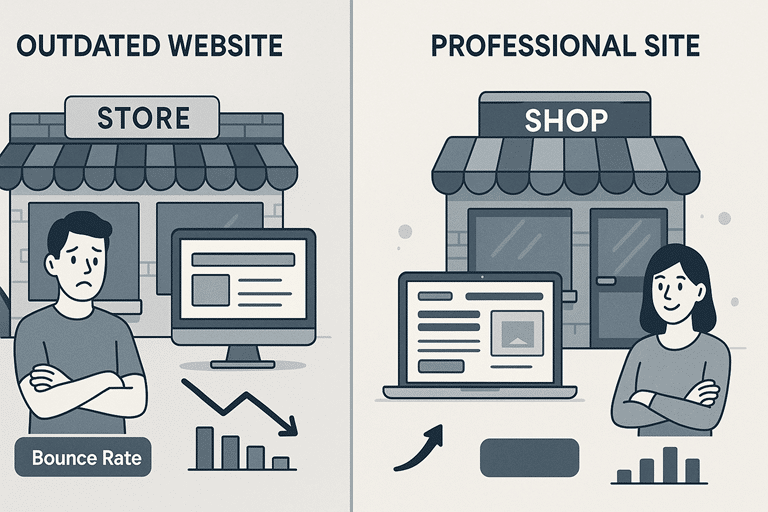
Every sector is becoming congested online; hence, professional website creation can help you. A current website distinguishes you right away if most of your rivals just have old websites or are only on Facebook. Studies show that consumers favour companies having websites; one poll revealed 75% of consumers are more inclined to pick a company with a website than one that just operates on social media. crosstheteas.org. One major benefit of having a website is that it helps individuals project steadiness and authenticity.
Special site features may set you apart even in highly competitive industries. A legal firm may, for instance, provide a safe client portal on its website—something most rivals do not. Alternatively, a shop might use 3D product visualisers. Only expert development may allow these unique additions. Companies with websites get “3x more customers than those without,” Forbes observes. Stated differently, every site provides a baseline competitive advantage; a well-built one magnifies that advantage.
Moreover, a smart website can emphasise, in a manner that social networks cannot, what distinguishes your brand: your narrative, values, or particular knowledge. It guarantees that, upon prospect investigation, they discover a coherent, brand-building story. Small companies wanting to increase brand recognition must first understand this. At DWM, our web development projects typically yield quick competitive results, as customers often notice increased engagement rates and enquiries simply by launching a polished, optimised website. Basically, website development is about pushing ahead in your industry by providing a better online presence, not just about maintaining pace.
Scalability for Future Growth
The scalability of a website is one of its most significant advantages for future-proofing. An appropriately built site has the capacity to grow. This implies that the architecture and code are set up such that simple additions to new features or content may be made. Whether your intended launch is an e-commerce shop, adding membership portals, supporting many languages, or growing your blog, a well-developed site can change without a whole rebuild.
Think of the exponential expansion of internet commerce: worldwide online sales exceeded $5.4 trillion in2 (blog.hubspot.com) and are climbing. Should your product or service have any digital or e-commerce component, your website will ultimately have to be able to handle that. A scalable site built today allows you to roll out a shopping cart or appointment system at any moment, instead of beginning from scratch years down the road. This adaptability keeps you flexible and helps you to avoid future expenses.
Beyond business, scalability refers to managing additional material and traffic. Good development guarantees that your site can endure surges—like a viral social media mention bringing thousands of visitors—and be housed on cloud architecture. Your staff may also simply maintain the site; for example, creating a new blog post or changing product information should be easy with a customised CMS.
Actually, we remind customers that a strong website is like constructing a strong basis for a developing structure. Should your company increase next year, your website will not crumble under pressure. Outdated infrastructure or downtime won’t cost you clients. Creating a flexible website development strategy helps your online presence to expand with your aspirations.
Builds Customer Trust & Online Authority
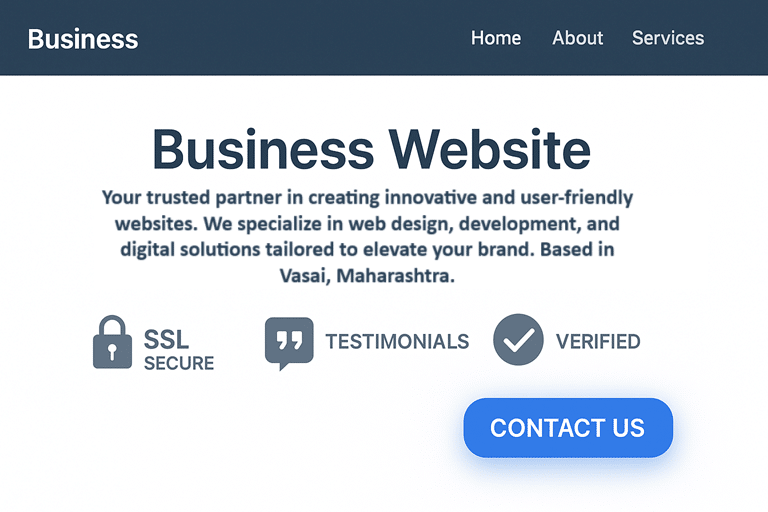
Ultimately, a properly created website greatly increases authority and trustworthiness. It shows guests your established, safe, and dedicated nature. Data supports this: 56% of customers avoid companies without a website (crosstheteas.org). Concurrently, 75% of people establish impressions of trustworthiness based on website design (crosstheteas.org). You run the danger of seeming obsolete or even fake without a safe, well-kept site.
Development of a website addresses fundamental trust signals: we include SSL certificates (HTTPS), unambiguous privacy rules, and easily available contact information. We also provide straight-to-the-site social evidence like case studies, certificates, and testimonials. Including a rotating customer testimonial section or connecting to actual project case studies, for instance, instantly calms new guests. We deliberately include these components during development.
A well-designed site transforms over time into a centre of authority. You may post industry insights, how-to instructions, or thought leadership pieces. Presented on a quick, easily navigable website, this material strengthens your profile. Search engines also value this authority: backlinks drawn from excellent content on your website will raise ranks. Every deliberate element and piece of material on your website essentially adds to a trusting ecology. After seeing a fantastic website, clients will be more inclined to trust and appreciate your brand than merely locate you more readily.
Data & Trend Insights
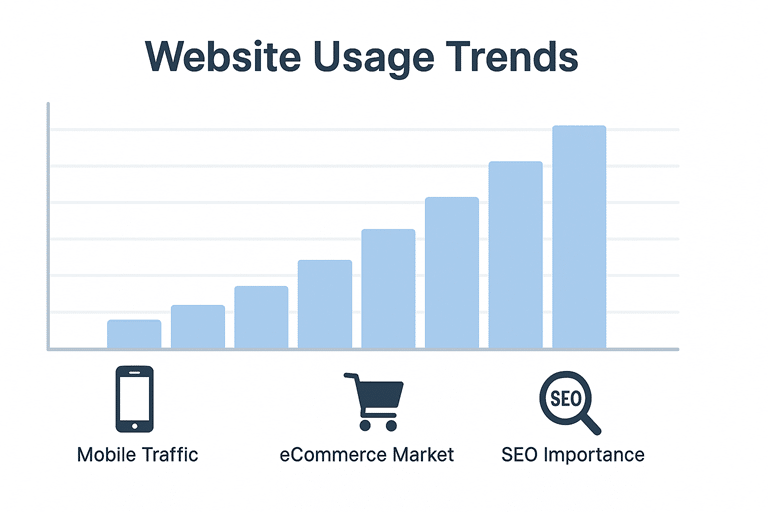
Industry facts repeatedly support why smart business is based on website development. For example, Wix claims that most companies recognize the necessity of having a website, as 73% of American small businesses currently possess one (wix.com). Another important realization is that more than 80% of consumers browse the Internet before deciding on a purchase. This implies that the great majority of consumers in the research stage cannot see your company if it has a quality website.
Further data highlight the trends: the worldwide website builder and development business, estimated to reach $2.1 billion by wix.com, is exploding. Both conventional companies going online and innovative entrepreneurs are driving this expansion. Furthermore, take into account mobile behaviour patterns: almost 75% of Google searches for local companies take place on mobile devices. A well-developed, mobile-friendly website guarantees you will catch these queries.
The cost-benefit analysis also favours development. Companies with websites have an average ROI from internet marketing greater than those depending on print or word-of-mouth bloggers (blog.hubspot.com). The long-term benefits of development are evident, given one estimate indicates companies without websites forgo up to 40% of their potential traffic to competitors’ crosstheteas.org. Simply said, statistics and projections indicate that funding a website is not only wise but also very necessary.
Case Studies
- After a website redesign, a specialty kitchenware retailer—who has ten years of experience—markedly increased sales. This customer saw sales rise by 150% at kerenlabs.com with a complete redesign focused on improved mobile experience and easier navigation. This real-world example demonstrates how a focused development approach may change online performance; their previous site had sluggish loading and an unclear layout; the new site corrected them and increased customer conversions.
- Local Brand Revival: On a limited budget, another local tea firm totally rebuilt its website and brand. Re-launched with a new look and improved checkout, they tied into content marketing. Hence, revenue within months of marketingsherpa.com rose by 34%. Their experience shows that when development centers on user demands and new branding, even a limited-budget project may provide significant benefits.
- Startup Spotlight: Imagine a hypothetical local fitness studio whose membership enquiries increased after the introduction of a new bespoke website with online class reservations and a blog providing health advice. Many customers, according to its proprietors, commented, “I found you online and loved the site’s design.” The above scenario is consistent with many actual situations in service sectors where a polished website immediately increases leads.
These case studies highlight how well good website creation generates quantifiable expansion from more sales and leads to more market reach.
Conclusion
The arguments presented above clearly indicate that, by 2025, expert website development will be a pillar of corporate success. It immediately helps to expand, enhances user experience, promotes SEO and speed, and leaves a strong first impression. These advantages can significantly impact startups and small business owners, transforming them from obscurity to prominence in a fiercely competitive market.
Funding website development is financing the future of your business. It means providing consumers with the greatest possible experience when they approach them anywhere and however, they want (mobile, local search, social). It entails transforming your website into a very effective sales and marketing tool. Above all, it entails developing trust, as a good website informs users: “We’re real, we’re here to help, and we do things right.”
Designer Web Masters can assist you if you are ready to maximize these advantages. Our staff specializes in search engine optimization, conversion-orientated web design and development catered for startups and small companies. See our tailored web development offerings or get in touch right now. Your online presence should work as hard as you do, so let us create a website that strengthens your brand, increases client confidence, and stimulates development.
